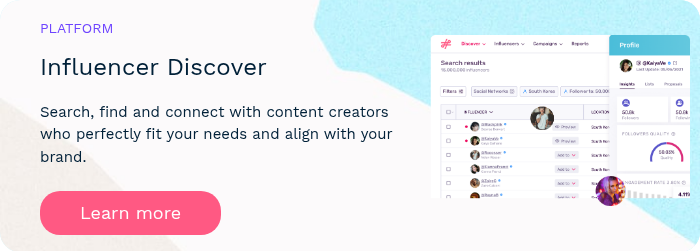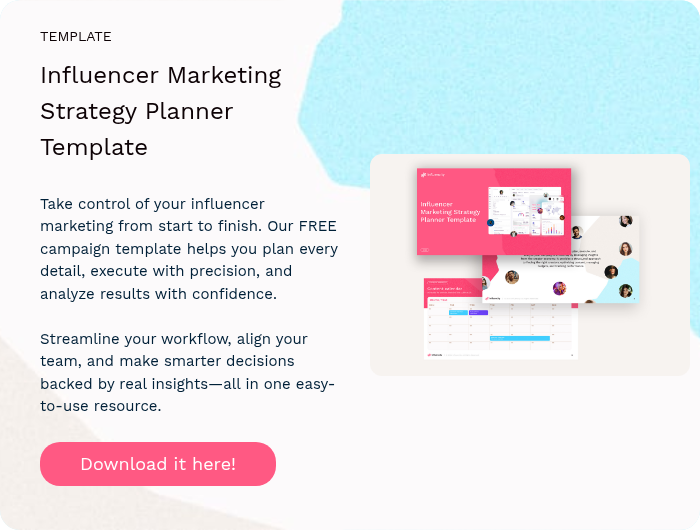There’s something magical about a book that hooks you from the very first page, and lately, that magic is showing up not just on bookshelves, but on social feeds. As both a lifelong book lover and a marketer obsessed with content strategy, I’ve been paying very close attention to the rise of BookTok. And let me tell you, there’s a lot we can learn from the publishing world about what makes influencer content actually work.
Think about it: What do viral novels, emotional unboxings, and TikTok creators have in common?
They all know how to tell a story.
But here’s the twist: the biggest stories in publishing right now aren’t just being told by authors. They’re being amplified by everyday readers, aka influencers, who cry, scream, annotate, and unbox their way through a book launch like it’s a cultural event.
And it works. Books like Fourth Wing, Icebreaker, and anything by Colleen Hoover have turned into chart-toppers, not just because they’re great reads, but because of how communities online have rallied around them.
As someone who geeks out equally over a juicy plot twist and a smart social strategy, I couldn’t ignore the lessons baked into these campaigns. This goes way beyond book marketing. This is influencer content strategy at its most powerful: emotional, user-led, and wildly scalable.
So, in this article, I’m going to break down exactly what made these BookTok-powered campaigns so successful, and more importantly, how you can apply the same principles.
I’ll look at how publishers (and the creators who love them) are turning product launches into moments that feel personal, communal, and impossible to scroll past. You’ll leave with a framework to build influencer content strategies that scale, without sacrificing soul.
Let’s turn the page.
What Is BookTok? And Why It’s a Game-Changer for Content Strategy
Unless you’ve been living under a pile of unsold manuscripts (or old Instagram strategy decks), you’ve probably heard the buzz about BookTok. But in case you're late to the party, let me catch you up,because if you work in influencer marketing or run campaigns for consumer brands, this is one trend you do not want to miss.
BookTok is a subcommunity on TikTok where creators, mostly Gen Z and Millennials, post passionate, wildly creative content about books. Think book hauls, spicy reviews, annotated page flips, and tearful monologues about that one twist they “absolutely did not see coming.” It’s where you’ll find readers debating endings, gushing over fictional characters, and turning novels into viral sensations with just a few well-placed tears and a trending audio.
The scale? Try over 77 billion views on the #BookTok hashtag. Yep, billion with a "B." But this isn’t just a cute corner of the internet. It’s reshaping the entire publishing industry. Unknown authors are becoming bestsellers overnight. Backlist titles are being revived (and reprinted). Major publishing houses have started building internal “BookTok teams” to ride the wave. When Colleen Hoover or Rebecca Yarros trends, it’s not just a moment, it’s a movement, one that sends books flying off the shelves and into the hands of eager new readers.
Books like The Seven Husbands of Evelyn Hugo and They Both Die at the End didn’t explode just because of brilliant PR, they were BookTok’d into fame. Influencer-led storytelling turned these titles into events, with readers rushing to buy them just to be part of the conversation.
So, what makes BookTok tick?
TikTok’s algorithm doesn’t operate chronologically like Instagram. It curates content based on individual behavior, meaning that if a user likes one teary-eyed book review, they’ll get ten more the next day. Here’s how content rises on BookTok:
- Watch time: If your video holds attention, TikTok rewards you.
- Engagement: Likes, comments, shares,it all fuels visibility.
- Trending sounds and hashtags: Aligning with what’s hot makes you more discoverable.
- User interactions: The algorithm learns what you like and serves you more of it.
This is key if you’re a brand or agency trying to harness similar energy. BookTok creators know how to work with emotion, relatability, and storytelling formats that feel native to TikTok’s vertical feed. And importantly, they build community, not just content.
And that’s what BookTok gets right. The content isn’t polished to death—it’s honest, emotional, and packed with FOMO. Captions like “Don’t read this unless you want to cry at 3 a.m.” or “#DoNotReadThisIfYouLikeSleep” do more than tease; they create irresistible curiosity.
-3d5fd.png?width=700&height=236&name=White%20%26%20Green%20Modern%20Bar%20Chart%20Graph%20(4)-3.png)
The BookTok Blueprint: What Made It Work
I’ve spent more time than I’d like to admit down the #BookTok rabbit hole. What started as curiosity quickly turned into obsession and professional admiration. BookTok is a masterclass in how content, community, and emotional connection collide to sell out books faster than any billboard ever could.
So what’s their secret? After analyzing dozens of viral campaigns and creator strategies, I’ve identified a clear playbook that any brand, not just publishers, can learn from.
1. Content Rooted in Community, Not Control
BookTok content doesn’t scream “Ad!” and that’s the beauty of it. Instead of polished promos, creators share messy, heartfelt, and totally unfiltered reactions to the books they love (and sometimes hate).
Think: teary confessionals, angry book-throwing moments, and emotionally wrecked late-night rants. One creator might sob over a plot twist, while another whispers “don’t read this if you like sleep” with a devilish grin and guess what? That works. It drives clicks. It builds FOMO. It sells books.
-27a55.png?width=700&height=256&name=White%20%26%20Green%20Modern%20Bar%20Chart%20Graph%20(5)-2.png)
2. Emotional Triggers = Content Gold
Ever notice how most BookTok bestsellers revolve around gut-punching emotions? “I’ve never cried so hard over fictional people,” one creator said about Fourth Wing. And that became a trend. Users began filming their post-read breakdowns. Suddenly, crying over a fantasy novel became the sign that you had to read it next.
The formula is simple but powerful: relatable tropes + personal reactions + curiosity hooks. This is where captions like “This book broke me” or “I didn’t sleep for 3 days” become social currency.
-3ae7f.png?width=700&height=328&name=White%20%26%20Green%20Modern%20Bar%20Chart%20Graph%20(6)-3.png)
3. Packaging That Sparks Curiosity and FOMO
One thing BookTok nails? Aesthetic. We’re talking dreamy bookshelf setups, candle-lit reveals, annotated pages, and custom mailers that beg to be unboxed. It’s not just about what the book is, but everything around it as well and how it’s presented. The packaging becomes part of the plot.
And here’s the kicker: users who don’t get the book yet still engage with the content. Why? Because they don’t want to miss out on the next cultural moment.
Think about captions like:
- “If you liked The Hunger Games, just wait...”
- “Don’t read this unless you’re ready to cry.”
- “You have 48 hours to read this before the spoilers hit TikTok.”
According to Penguin Random House, books that trend on BookTok can see a 600%+ increase in sales. That’s not a typo.
-35a50.png?width=700&height=259&name=White%20%26%20Green%20Modern%20Bar%20Chart%20Graph%20(7)-3.png)
4. Let Data Tell the Story (Not Just the Feels)
Yes, BookTok is emotional. But it’s also strategic. Publishers now build entire launch plans around the platform, tracking engagement, trending audio, creator impact, and more. They analyze which videos drive click-throughs, which creators spark conversions, and which tropes generate the most excitement and engagement.
What brands can do:
- Look beyond views. Track saves, shares, and comments that show true engagement.
- Identify what kind of content your audience responds to emotionally—and replicate that in other formats.
- Use Influencity’s reporting tools to map out which creators are not only driving reach, but real resonance. Hint: that’s where the ROI lives.
Just like publishers don’t send fantasy arcs to rom-com influencers, your creator strategy needs nuance. Use persona-building to go beyond follower count and focus on tone, values, and audience mood.
Build this into a content calendar. For example:
We’ve all seen those spellbinding BookTok unboxings: handwritten notes with elegant calligraphy, soy candles scented like fictional worlds, Spotify playlists with character vibes. These are content catalysts. Packaging has become part of the storytelling strategy, and creators know that an aesthetically pleasing experience gets shared.
-3a076.png?width=700&height=146&name=White%20%26%20Green%20Modern%20Bar%20Chart%20Graph%20(8)-3.png)
-351f2.png?width=700&height=148&name=White%20%26%20Green%20Modern%20Bar%20Chart%20Graph%20(9)-3.png)
-444e4.png?width=700&height=152&name=White%20%26%20Green%20Modern%20Bar%20Chart%20Graph%20(10)-4.png)
-2be7e.png?width=700&height=141&name=White%20%26%20Green%20Modern%20Bar%20Chart%20Graph%20(13)-2.png)

-376f8.png?width=700&height=145&name=White%20%26%20Green%20Modern%20Bar%20Chart%20Graph%20(11)-3.png)
-3b04c.png?width=700&height=332&name=White%20%26%20Green%20Modern%20Bar%20Chart%20Graph%20(12)-3.png)


-3d5fd.png?width=700&height=236&name=White%20%26%20Green%20Modern%20Bar%20Chart%20Graph%20(4)-3.png)
-27a55.png?width=700&height=256&name=White%20%26%20Green%20Modern%20Bar%20Chart%20Graph%20(5)-2.png)
-3ae7f.png?width=700&height=328&name=White%20%26%20Green%20Modern%20Bar%20Chart%20Graph%20(6)-3.png)
-35a50.png?width=700&height=259&name=White%20%26%20Green%20Modern%20Bar%20Chart%20Graph%20(7)-3.png)


